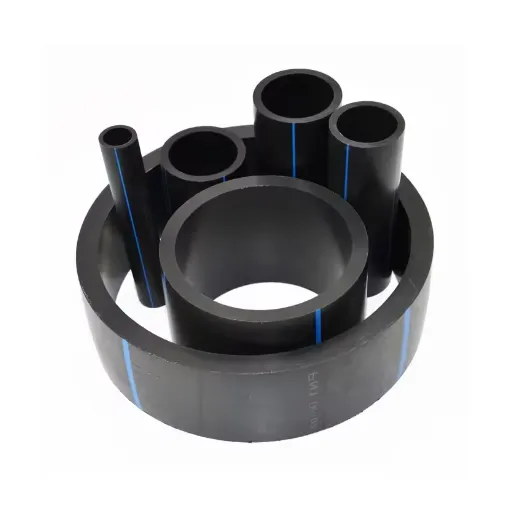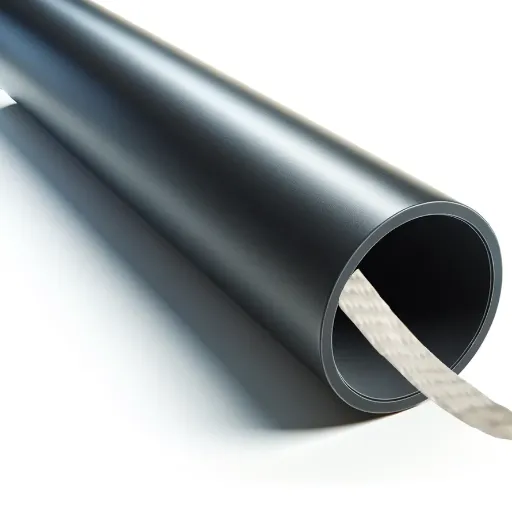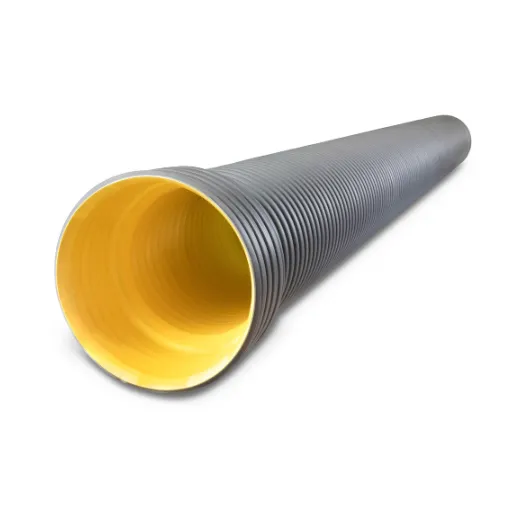When it comes to modern construction and plumbing, PVC pipes have established themselves as a key component due to their versatility, affordability, and wide range of applications. However, one question that frequently arises is how long PVC pipes can truly last and what factors influence their durability. From residential plumbing systems to large-scale industrial projects, understanding the lifespan of PVC pipes is crucial for effective planning, maintenance, and cost management. This article will explore the science behind PVC pipe longevity, examine the environmental and material factors affecting their performance, and provide valuable insights into why they continue to be a preferred choice for infrastructure solutions. Whether you’re a contractor, engineer, or homeowner, this guide aims to equip you with the knowledge needed to make informed decisions about PVC pipes and their uses.
Introduction to PVC Pipes
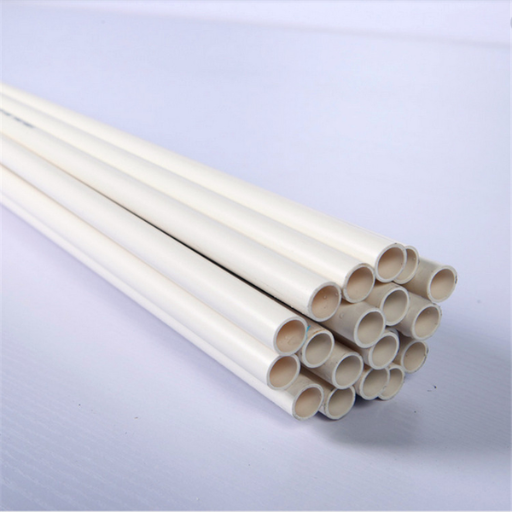
What are PVC Pipes?
The PVC stands for polyvinyl chloride, a highly versatile plastic used for manufacturing piping systems. RCA was earlier classified as a vinyl; PVC is a polymer or a plastic. PVC pipes are lightweight and affordable and are commonly used in many industries, such as construction, plumbing, and irrigation, owing to their adaptability and low cost.
Corrosive resistance is one of the most important properties of PVC pipes, where internal corrosion resistance will suit potable water, wastewater, and other fluids for transport, whereas external corrosion resistance gives additional environmental immunity to the PVC pipes. They have a great capacity to withstand pressure and can work under different environmental conditions, like high humidity and extreme temperature, until they are used as per the grade specifications of PVC. These factors ensure long life and less maintenance compared to other materials such as metals.
Various size specifications, wall thickness, and pressure ratings for PVC pipes are manufactured to satisfy the needs of different applications. They are also designed with smooth inner surfaces to reduce friction and allow efficient fluid flow, thus preventing energy loss during transportation. Further, an extra edge is given to these pipes for sustainability as PVC is a recyclable material.
Common Applications for PVC Pipes
Due to their durability and high versatility, PVC pipes are largely valued in the industrial sector. Here are five primary applications detailed:
- Water Supply Systems: PVC pipes are widely used for potable water distribution. Their resistance to corrosion and the formation of scale contributes to the clean and long-term supply of water. According to industry data, on an approximate global scale, about 40 percent of water distribution systems depend on PVC piping due to its reliability and lower maintenance cost.
- Sewage and Wastewater Systems: Being inert, PVC is suitable for sewage and wastewater disposal purposes. Its smooth internal surface lessens blockage problems and withstands both high-pressure and low-pressure conditions very well. Studies show that PVC pipes can stand more than 50 years underground in sewage applications without much degradation.
- Irrigation Systems: PVC pipes are commonly used for irrigation in agriculture, including drip irrigation and sprinkler systems. Their lightweight nature makes them easy to transport and install, while their resistance to environmental stress ensures they can perform well even in harsh climate conditions. PVC is estimated to comprise 60% of all irrigation piping systems worldwide.
- Industrial Liquid Transportation: PVC pipes are employed in chemical plants for conveying non-hazardous liquids. They resist corrosion and chemical reaction and serve as a safe means for transporting different kinds of substances like mild acids, alkalis, and salts.
- Electrical and Telecommunication Conduits: PVC conduits provide protection to electrical wires and telecommunication cables from environmental and physical damage. Being non-conductive and fire-resistant makes them a preferred solution both for underground and aboveground installations, thus ensuring safety and reliability in urban infrastructure projects.
Highlighting in different ways makes it evident how PVC pipes are important in all sectors and will remain the basic material for modern development.
Why Choose PVC Over Other Materials?
PVC enjoys higher popularity than other materials due to its durability, cost-effectiveness, and versatility. Among its distinctive features is its corrosion resistance. This property guarantees longer life in harsh environments. PVC pipes will not rust, in contrast to steel, and do not degrade with age under moisture exposure. This makes PVC highly suited for plumbing, drainage, and electrical conduit systems. Thus, installations with this will require less maintenance and have a longer lifespan.
Another significant factor is its light weight. PVC pipes weigh less; therefore, handling, load shifting, and installation are easier to do than with steel or concrete. Easy installation keeps labor costs low and shortens the time of staging. Also, PVC has a very smooth surface inside, providing great flow rates in water and fluid conveyance applications, thereby exceeding rougher materials that cause friction or blockage.
Lastly, PVC is very inexpensive. It competes in the middle of the spectrum of price versus performance and thus can be offered for almost any application. In fact, in many ways, PVC is also quite good for the environment; PVC materials can be recycled with new recycling technologies, thus promoting sustainable practices in industries worldwide. All combined features make PVC a highly regarded material in construction, infrastructure, and many other fields.
Durability of PVC Pipes
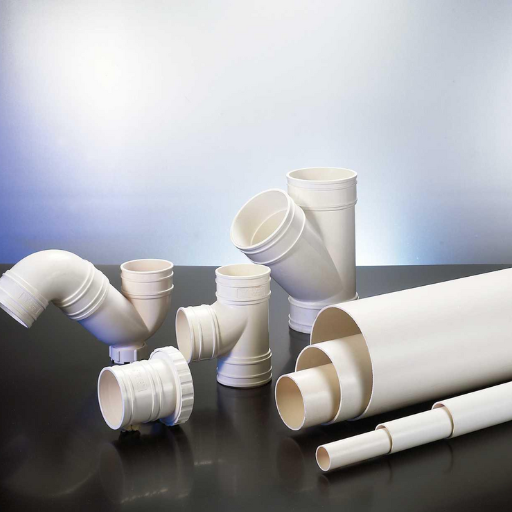
PVC Pipe Strength and Resistance
PVC pipes are well known for their high strength-to-weight ratio, making them apt for all sorts of applications that require strength and flexibility. Internal and external pressures face the greatest opposition, largely due to how tightly their molecules were engineered. The high-stress conditions offered by the environment generally allow them to outperform many of the traditional materials, such as cast iron or concrete.
Beyond their pressure resistance, PVC pipes are also chemically resistant. They perform well in chemical transportation, highly corrosive liquids causing leakages, or pipe degradation through sewage systems, agriculture, or industrial waste management. Inherent chemical resistance to both acid and alkaline media enables them to maintain structural integrity even in harsh chemical environments.
Thermal and UV stability are food for the strength of PVC. Today’s formulations contain stabilizers that increase the lifespan of the material against prolonged exposure to sunlight and adverse temperatures, thus assuring performance in diverse climates. Durability is enhanced by PVC’s ability to absorb impact without any cracking, meaning it can be used where installation demands high tensile strength, such as buried pipelines.
Together, these qualities ensure superior durability of PVC piping systems, which can easily operate for 50 years or more with very little maintenance. Making PVC pipes an ideal choice for emergency residential and industrial infrastructure due to their high resistance to mechanical stress, chemical corrosion, and weathering.
Corrosion Resistance and Chemical Stability
Protection from various corrosive agents, internal or external, is indeed one of the characteristics imparting durability to PVC piping systems for a wide variety of uses. PVC lacks the natural tendency to rust; in other words, it does not oxidize or corrode with moisture or, say, aggressive soil conditions like metal pipes do. From a chemical standpoint, PVC is quite stable-it can withstand long exposures to many acids, bases, salts, and organic solvents without any significant degradation.
In this regard, PVC pipes have been stated to withstand structural degradation and suffer functional and mechanical insulation, even under highly acidic or alkaline conditions, and for this reason, they are used in industrial services such as chemical processing plants, wastewater treatment, and agricultural water irrigation. For example, several studies show that PVC pipes placed in an acidic environment of pH as low as 2 show insignificant degradation of material properties within a reasonable time frame. This resistance can also be extended to a variety of organic compounds, further expanding their use in chemically exposed areas.
The chemical inertness of PVC prevents the fluids it carries from getting contaminated or reacting in unwanted ways. This becomes pretty important in any system that has to deal with potable water, especially where purity standards and health-related requirements apply. These properties, alongside the PVC-pipe surface’s hydrophobic characteristic, resisting biofilm formations-ensure the pipes’ longevity and operational reliability, even when subjected to harsh working conditions.
Impact of Environmental Conditions
Environmental conditions strongly influence the performance, durability, and reliability of systems and materials. Some key factors that need to be taken into account are as follows:
- Temperature Fluctuations: Subjecting any material to extreme temperatures or frequent thermal cycling will cause gradual expansion, contraction, or degradation. For example, PVC pipes exist between 32°F and 140°F without loss of cool integrity; they would either become brittle if very cold or deform if very hot.
- Ultraviolet (UV) Radiation: Long UV exposure can bring photodegradation, including discoloration of color, cracks on the surface, or reduction in material strength. This must be accounted for when making outdoor installations where coatings or additives that serve as UV-resistant are applied.
- Chemical Exposure: Corrosive substances really are acids or alkalis, or solvents affecting the material’s structure over time. For example, the widely used materials of industrial applications must stand up to and withstand any chemical attack and thereby prevent early failure.
- Moisture and Humidity: Excessive humidity or direct water contact would corrode some materials, encourage the growth of microbes, or hamper their working ability. Materials that do not corrode, such as PVC and stainless steel, would be preferred in such an environment for a bigger reliability scale.
- Mechanical Stress and Vibration: Repeated mechanical loads, vibration, or shock can accelerate wear and tear, promoting stress cracks and material fatigue; prevention of these can go a long way toward extending the operational life of a system.
With the knowledge of these environmental factors and mitigating measures, the system designer can maximize the choice of materials and standards applied to performance, thereby giving their installation a longer life.
Lifespan of PVC Pipes
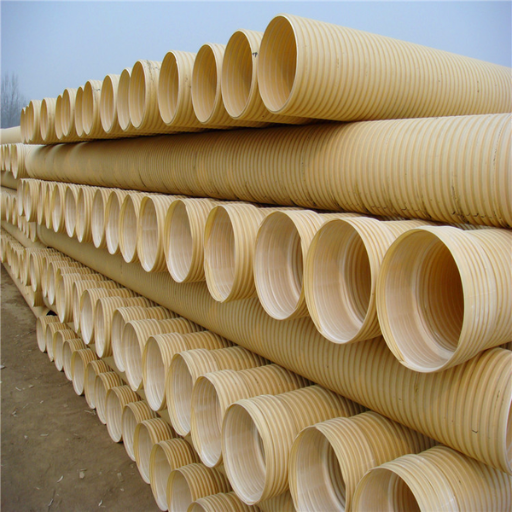
Average Lifespan of PVC Pipes
PVC pipes find vastly varying uses in amenities, at institutes, and in manufacturing. They are the cheapest to install and offer good resistance to corrosion. The lifespan of PVC pipes usually ranges from 50 to 100 years, depending on factors such as the quality of manufacturing, installation method, temperature, climate, and the transported material within.
Lessening the effect of UV radiation, soil acidities, or temperature variation contributes to the modern enhancement of polymer chemistry and manufacturing techniques, which equally benefits the PVC pipe’s structural integrity. Pressure or load-rated PVC piping being used for water distribution and irrigation is normally designed to resist a given level of steady mechanical and hydraulic stress so that it will perform satisfactorily throughout its service life.
Studies conducted in the industry demonstrate that PVC pipe systems done well, maintained, and installed under optimal conditions, shall operate for at least 70 years. Opposite forces of premature failure are malinstallation, severe environments in the early years, and mechanical stresses during the course of time. Proper maintenance strategies involve regular inspection and monitoring of the pipeline pressure.
Factors Influencing Pipe Lifespan
The lifespan of piping systems is affected by the interplay of material properties, environmental conditions, and operation. One crucial factor is the chemical composition and manufacturing quality of the pipe material. For instance, HDPE and PEX pipes generally hold up better than the traditional materials, such as galvanised steel, to chemical corrosion and stress cracking.
Environmental factors are yet another consideration. Variations in temperature or UV exposure and soil composition may all stress the piping material and lead to deterioration with time. For example, they may face the risk of corrosion accelerated due to highly acidic or alkaline soils if such soils support the pipes without proper coatings.
Operational factors such as water pressures, flow velocities, and chemical properties of the fluids transported are other important factors. Micro-fractures could result from excessively high internal pressure or water hammer effect and propagate through cyclic loading. Besides being decisions against maintenance due to wear caused by sediments or corrosion contaminants from within the fluids carried, such systems increasingly require maintenance or replacement.
These considerations call for great design and proactive maintenance. Appropriate insulation, anticorrosion treatment, and advanced pressure regulation would greatly increase durability. When predictive maintenance is combined with ultrasonic testing and advanced data analytics, operators could determine any learning suggests of structural compromise, thereby guaranteeing timely interventions that would enhance the effective service life of piping systems.
How Sun Exposure Affects PVC Pipes
Ultraviolet rays from the sun significantly affect the structural integrity and performance of PVC piping. The photodegradation starts breaking the chemical bonds in the polymer structure of PVC due to continuous exposure to UV radiation. During degradation, the affected surface loses color and gets chalky or typically yellowish, weakening the material’s strength.
Loss of impact resistance and tensile strength in PVC is the foremost concern with UV exposure. It was observed from studies that the unprotected PVC undergoes fast deterioration when exposed to direct sunlight, especially in regions of high solar irradiance. Hence, proper measures should be adopted to reduce exposure. These include coating with UV-resistant material, using weatherable grades of PVC with stabilizers, or physical barriers like pipe insulation or sleeves.
Depending on the length of exposure and its intensity, the damage varies. Hence, manufacturers have increasingly incorporated titanium dioxide (TiO₂) as UV stabilizers in PVC formulation. They work by scattering and absorbing UV radiation, thereby slowing down the degradation process. Using UV-stabilized PVC pipes or paint with a UV-resistant coating will help increase the life of PVC and sustain performance in cases where long-term outdoor exposure is unavoidable. Combining these protection means through proper planning ensures PVC pipes stay reliable and conform to design specifications as intended.
Making PVC Pipe Last
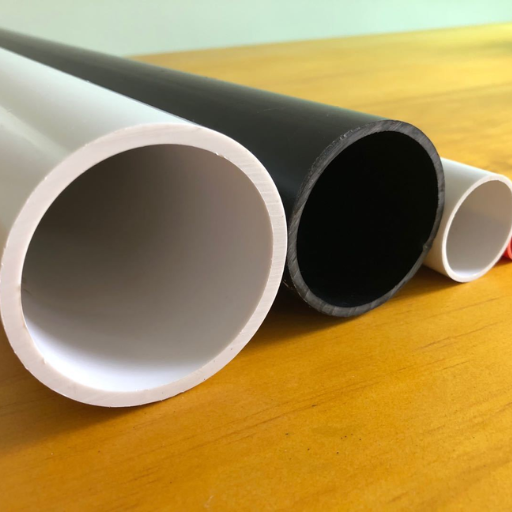
Best Practices for Installation
Only in proper PVC pipe installation can the pipes last through time and deliver service under varying conditions. Hence, an appropriate pipe classification is selected according to the pressure requirements and environmental conditions of the project. The trenching work should be carried out in strict accordance with industry standards, with smooth bedding walls and a uniform bedding bottom so as to give continuous support along the pipe length. Any sudden changes or voids in the trench create stress concentration points, which are detrimental to the pipe’s structural integrity.
During transportation and installation, care shall also be taken to prevent leakage or damage to the pipe in the form of scratches, dents, or fractures, thus compounding its weakening with time. For joining, solvent welding or rubber gasket joints shall be conducted strictly by the manufacturer’s instructions so that adhesions, bonding, or joint alignments are not in error, causing leaks or joint failures. Consideration must also be given to the thermal expansion and contraction, especially where wide temperature fluctuations are expected. Expansion joints or means to accommodate movement must be incorporated into the design to prevent undue stress.
Backfilling of the pipe may be the last thing on the minds of some people, but this should be considered carefully as well. Backfill materials should contain no sharp objects or big stones with the potential to damage the pipe. The next layer of backfill should be compacted gently so as not to dislodge the pipe. Finally, pressure testing the installed system before putting it into operation tests the integrity of a whole pipeline system and also verifies installation against design specifications. If done systematically, it is these practices that largely render PVC pipe a long life and dependable operation.
Importance of Proper Maintenance
Proper maintenance of PVC piping systems is the measure for a long life, working efficiency, and cost-effectiveness. Inspections on a routine basis help detect the incipient stage of wear. Some wear and tear is the leakage of pipes, corrosion, and joint failures, which later affect the integrity of the system. It is worthy of assessment of environmental factors such as soil composition, temperature variations, and chemical agents. If these factors are not controlled closely, the degradation of materials is fast.
Moreover, useful maintenance theories can also be employed. This includes ultrasonic testing or infrared thermography for revealing hidden faults inside the system without dismantling it. Industry standards recommend periodic maintenance every 12 to 24 months, depending on the nature of the application and environmental conditions, to reduce sudden failures. Working with such techniques by using pressure sensors or any real-time diagnostic tools will greatly improve reliability and allow facility managers to act before an issue occurs.
Proper maintenance would ensure that the financial investment put into that system is well protected, alongside compliance with regulatory safety standards and risk reduction for expensive downtime or environmental damage.
Addressing Improper Installation Issues
Poor installation of mechanical or industrial equipment is the cause of inefficiencies and failures in systems, with serious safety and productivity implications. Some practices causing poor installation may consist of misalignment, insufficient anchoring, or improper sealing of components that may lead to fast wear, energy losses, or even complete breakdown. For example, studies show that misalignment in rotating machinery can reduce the equipment life by almost 50%, whereas connections not properly torqued may release hazardous substances or fail to provide structural integrity.
Thus, strict installation procedures must be implemented to avert any such threats, those that align with mthe anufacturer’s specifications and standards. Precision tools like laser alignment systems help improve installation by minimizing any errors during installation. Third-party verifications or quality assurance inspections can also be engaged to help validate that all components satisfy the performance requirements before commissioning.
New simulation software programs and 3D modeling are a huge help in solving installation problems. These give engineers the capability to foresee problems with fitment and optimize the assembly configuration so that installation errors are minimized. On the other side, predictive analytics based on historical performance data helps organizations improve their practices to eliminate these problems from occurring again, thus helping to drive operational excellence and asset reliability.
Comparative Analysis of Plumbing Materials
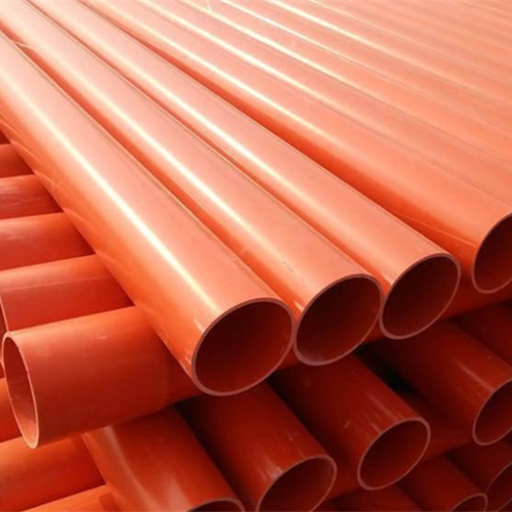
PVC vs. Metal Pipes: Advantages and Disadvantages
PVC pipes are lightweight, corrosion-resistant, and simple to install; they are cheap and may not be that durable. Metal pipes are durable and heat resistant, and last longer. Sometimes they get corroded, get heavier, and more expensive.
|
Aspect |
PVC Pipes |
Metal Pipes |
|---|---|---|
|
Mass |
Lightweight |
Heavy |
|
Robustness |
Moderate |
High |
|
Resistance |
Corrosion-Free |
Corrosion-Prone |
|
Expense |
Affordable |
Expensive |
|
Setup |
Simple |
Complex |
|
Thermal Tolerance |
Low |
High |
|
Longevity |
Moderate |
Long |
|
Eco-Impact |
Moderate |
Low |
|
Flexibility |
High |
Low |
|
Upkeep |
Minimal |
Frequent |
PVC vs. Concrete Pipes: A Detailed Comparison
Prone to lightweight, PVC pipes are flexible and cheap, but are less durable and resistant to heat. Concrete pipes are, however, great for durability, strength, and environmental purposes, but heavy and expensive to install.
|
Aspect |
PVC Pipes |
Concrete Pipes |
|---|---|---|
|
Mass |
Lightweight |
Heavy |
|
Robustness |
Moderate |
High |
|
Adaptability |
High |
Low |
|
Expense |
Low |
High |
|
Setup |
Easy |
Complex |
|
Thermal Tolerance |
Low |
High |
|
Longevity |
Moderate |
Long |
|
Sustainability |
Moderate |
High |
|
Resilience |
Low |
High |
|
Oxidation |
Resistant |
Resistant |
Cost-Effectiveness and Sustainability of PVC
Various applications with limited budgets opt for the PVC piping system. Hence, low expenses in materials and installation are common to a human experience with PVC. PVC manufacture consumes less energy than concrete or metal, thus resulting in essentially lower costs. Transportation of PVC materials requires less freight, and they are easy to mount, thereby producing a lowering effect on the cost of labor or the use of machinery. Added to this factor is the longevity of a product, the greater the deterioration resistance in the presence of chemicals, and hence less maintenance needs through its life cycle, thereby enhancing cost-effectiveness.
In the subsequent step, from a sustainability viewpoint, the present PVC offers moderate benefits in terms of environmental impact and use of resources. PVC is recyclable, and there are initiatives to enhance the rate of recycling in several parts of the world. The recycled or scrap PVC may be used in the manufacture of other products, thereby lessening the volume of waste as well as the demand for fresh raw materials. With various improvements, the PVC process now exhibits reduced emissions and lower demand for energy, hence supporting the worldwide pursuit of offsetting industrial carbon footprints. Nevertheless, issues originating from aspects of solving a PVC lifecycle, particularly with long-term breakdown and microplastic pollution, remain points of concern where research and innovation are still ongoing.
Balancing cost and sustainability, PVC can be touted as an economic alternative practically in any application that demands cheap flexibility while also being conscious of reduced resource consumption. An improvement in the environmental profile, such as recycling and reduction in additives used during production, will make it more prominent to be considered as a greener alternative. It becomes quite an interesting alternative from an economic point of view because it is cheaper in initial cost, conveniently flexible for use, though not as sustainable as concrete.
References
Frequently Asked Questions (FAQ)
Q: What is the typical life of a PVC pipe?
A: The typical life of a Pa VC pipe can range from 50 to 100 years when properly installed and maintained. Factors such as environmental conditions, soil type, and exposure to UV light can affect its longevity.
Q: How does the installation process affect the life of the PVC pipe?
A: The installation process plays a crucial role in the life of a PVC pipe. Proper techniques, including correct joining methods and ensuring a stable foundation, can significantly enhance its durability and lifespan.
Q: What factors influence the life of a PVC pipe?
A: Several factors influence the life of PVC pipe, including temperature fluctuations, chemical exposure, soil conditions, and the quality of the PVC material. Regular inspections can help identify potential issues that may shorten its life.
Q: Can PVC pipe be recycled at the end of its life?
A: Yes, PVC pipe can be recycled at the end of its life. Many recycling facilities accept PVC materials, allowing them to be repurposed into new products, thus contributing to environmental sustainability.
Q: How does UV exposure affect the life of PVC pipe?
A: UV exposure can degrade the life of PVC pipe over time, causing it to become brittle and lose its strength. Using UV-resistant products or protective coatings can help mitigate these effects and extend the pipe’s life.
Q: What are the signs that indicate the end of the life of a PVC pipe?
A: Signs that indicate the end of the life of a PVC pipe include visible cracks, discoloration, brittleness, leaks, or a decrease in water flow. Regular maintenance and inspections can help catch these issues early.
Q: Are there maintenance tips to prolong the life of PVC pipe?
A: To prolong the life of PVC pipe, it is essential to conduct regular inspections, avoid exposing the pipes to extreme temperatures, and ensure proper drainage to prevent water accumulation and pressure build-up.
Q: How does the diameter of a PVC pipe affect its life?
A: The diameter of a PVC pipe can impact its life by affecting water flow and pressure. Larger diameter pipes may handle higher flow rates better, reducing wear and tear, while smaller pipes may be more prone to clogging and damage.
Q: What is the difference between PVC pipe and other types of piping in terms of life expectancy?
A: Compared to other types of piping, such as metal or clay, the life of PVC pipe is generally longer due to its resistance to corrosion and chemical damage. However, each material has unique advantages and disadvantages depending on the application.



